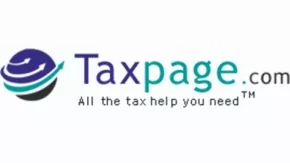- with Senior Company Executives, HR and Finance and Tax Executives
- with readers working within the Accounting & Consultancy and Property industries
Introduction to 401(k) Plans for U.S. Employees
A 401(k) plan is the cornerstone of retirement savings for millions of Americans, offering tax-advantaged contributions, employer matching, and long-term investment growth, and is best used in conjunction with professional tax planning. While straightforward in design, effective management requires understanding IRS regulations, contribution limits, and withdrawal rules. Knowledgeable U.S. tax lawyers provide essential guidance to optimize these plans.
History and Importance of 401(k) Plans
Introduced via the Revenue Act of 1978, Section 401(k) of the Internal Revenue Code authorized tax-deferred retirement savings. Today, over 60 million Americans use 401(k) plans to secure their retirement, with total assets exceeding $7 trillion. Seasoned U.S. tax lawyers often assist employers in designing compliant, tax-efficient plans that maximize employee participation.
Key Features of 401(k) Plans
Tax Advantages: Traditional vs. Roth 401(k)
Contributions to a traditional 401(k) reduce current taxable income, with taxes deferred until withdrawal. Roth 401(k) contributions are made post-tax but allow tax-free withdrawals in retirement. Knowledgeable U.S. tax lawyers advise employees on which structure maximizes long-term benefits.
Contribution Limits for 2025
- Employee contribution: $23,000
- Catch-up (50+): $7,500
- Combined employer + employee max: $69,000 ($76,500 for 50+)
Experienced U.S. tax lawyers guide clients in maximizing contributions while complying with IRS nondiscrimination rules.
Employer Matching Contributions
Employer matching is a key advantage, often structured dollar-for-dollar or as a partial match. Failing to meet match requirements can leave "free money" unclaimed. Expert U.S. tax lawyers advise on match structuring and compliance.
Vesting Rules and Retirement Security
Vesting schedules determine when employees fully own employer contributions, usually spanning three to six years. Seasoned U.S. tax lawyers provide strategies for navigating vesting periods.
Withdrawals and Penalties
Early withdrawals (before 59½) incur a 10% penalty plus income tax, with exceptions for disability, medical expenses, and hardship withdrawals. RMDs must begin at 73 unless funds are rolled into a Roth IRA. Expert U.S. tax lawyers assist in tax-efficient withdrawal strategies.
Advantages of 401(k) Plans
- Tax advantages: deferral or tax-free growth
- Employer contributions: immediate return on investment
- High contribution limits: surpass IRAs
- Automatic payroll deductions
- Investment flexibility: mutual funds, target-date funds
Common Pitfalls and Risks
- High fees
- Limited investment options
- Overconcentration in employer stock
- Early withdrawals
- Lack of professional guidance
Knowledgeable U.S. tax lawyers emphasize professional guidance to mitigate risks.
Employer Considerations
Offering a 401(k) plan can attract and retain talent but requires strict IRS and DOL compliance. Safe harbor plans simplify testing with mandatory contributions. Experienced U.S. tax lawyers advise on plan design and tax efficiency.
Pro Tax Tips
- Maximize employer matches
- Evaluate Roth vs. traditional contributions
- Avoid early withdrawals
- Plan for RMDs
- Small business owners: consider safe harbor plans
FAQs
- Difference between 401(k) and IRA: 401(k) is employer-sponsored with higher limits; IRAs offer flexibility.
- Rollover options: Direct rollovers avoid taxes and penalties.
- 401(k) loans: Unpaid loans treated as taxable distributions.
- Income limits: Contributions generally unrestricted; nondiscrimination rules apply.
The content of this article is intended to provide a general guide to the subject matter. Specialist advice should be sought about your specific circumstances.


